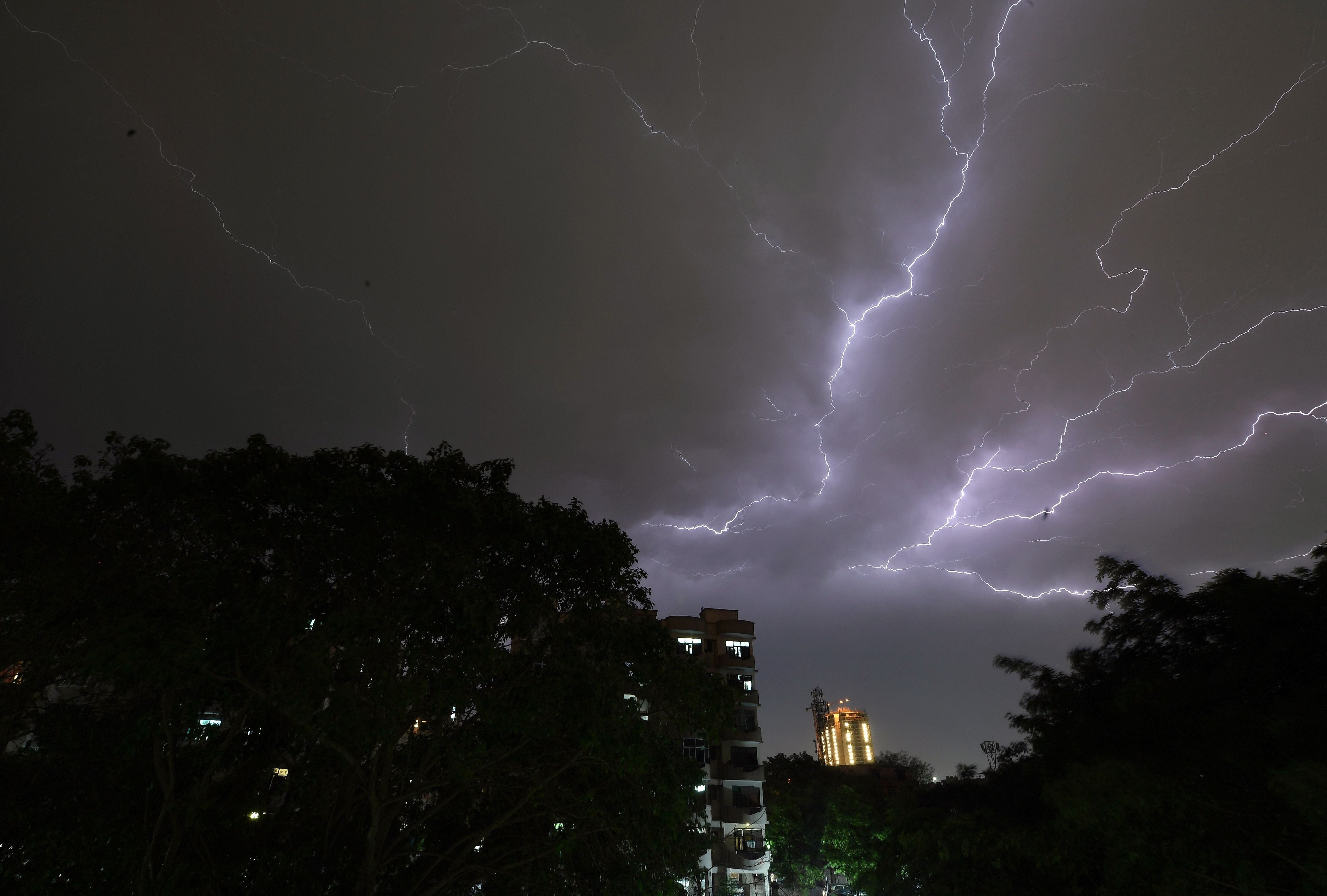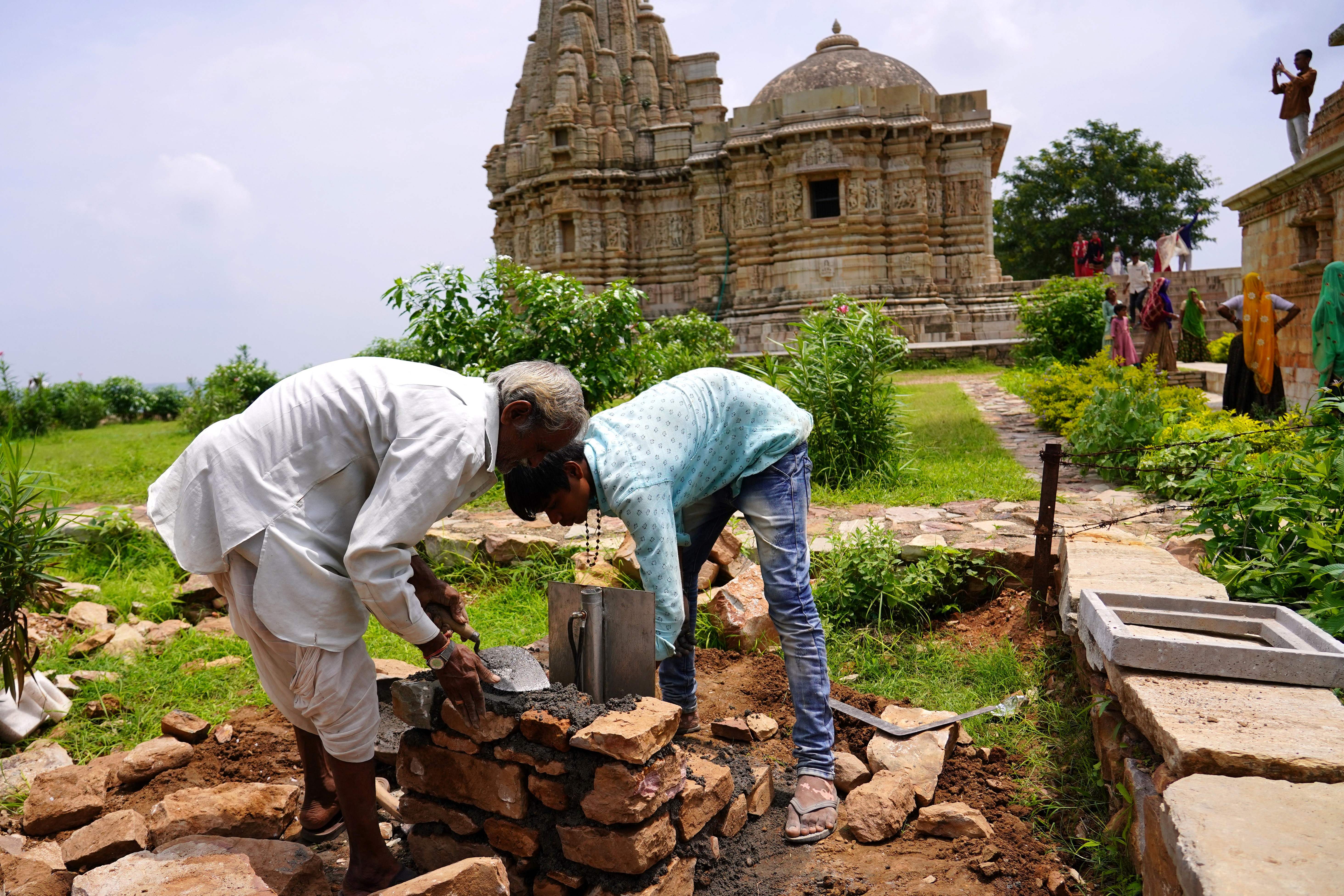‘There were no warnings’: Calls for India’s lightning-strike deaths to be declared a natural disaster
With growing evidence that lightning storms have become more frequent across the world, experts in India tell Namita Singh the reason behind the country’s high number of fatalities – and what the government can do to reduce it


It was drizzling when Haris Uddin, 44, stepped out to fish on the lake near his home in the northeastern Indian state of Assam. With a family back home entirely dependent on his ability to catch and sell fish, he had gone out to work on days when it was rainier than it was on 9 September, says his brother-in-law Muslim Uddin Sikdar, 55.
“Haris was alone on his boat when the lightning struck him,” Sikdar tells The Independent. “As it hit him, the boat turned and he fell into the lake.” A relative who saw this happen raised the alarm. “We quickly went into the lake to look for him. At first we thought he was alive, so we immediately took him to the hospital. But there, the doctor declared him dead on arrival.”
His body was burnt all down his left-hand side. Uddin, the sole breadwinner in the family, is survived by four daughters, a son, his wife, and his 80-year-old mother.
“There were no warnings about the lightning strike that day,” recalls Ataur Rahman, another relative of Uddin. “But then we have never received any lightning-strike warnings, ever.” Despite losing another family member and several friends in their village to strikes in the recent past, Rahman says the local people still have no idea what to do when a deadly lightning storm hits.
While lightning is a global phenomenon, India and other developing south Asian economies are disproportionally likely to suffer from lightning fatalities. That’s in part because a lot of people are out in open fields, tending to crops and livestock, but it is also a result of poor awareness and education about the dangers of lightning.
“The best way to survive a lightning strike is to avoid being outdoors in the first place,” says Colonel Sanjay Srivastava, an army veteran and the convener of the Lightning Resilient India Campaign. “But if you are caught outdoors and can’t take cover during a lightning storm, seek shelter in a low area under a dense growth of small trees. Don’t stand too close to them, though. Avoid tall, isolated objects like tall trees and flagpoles, since lightning often, but not always, tends to strike the tallest object in an area,” he explains.
According to an annual report by the campaign, 1,697 people died from lightning strikes in the year 2020-21. While the figure has come down from 1,771 deaths recorded in the previous financial year, lightning remains the biggest contributor to the rate of accidental deaths caused by natural phenomena in India.
And there is growing evidence that the incidence of lightning strikes is getting higher, both in India and across the world, as a result of the climate crisis. A warming climate leads to more extreme weather, like thunderstorms, and according to a study published by the University of California in 2015, for every 1C increase in temperature, the frequency of lightning strikes increases by 12 per cent.
Another study, published in Geophysical Research Letters in March 2021, identified a link between climate change and a rise in the incidence of lightning in the Arctic region. While in 2010 the region recorded around 18,000 lightning strikes, a decade later this was up to more than 150,000. During this period, the temperature in the region rose by 0.3C.

The advice about how to stay safe in a lightning storm is simple, but experts say the message is simply not reaching those who need it most. “A lot of people are dying because they are not aware about what they should do,” explains Gopa Kumar, programme director with the Lightning Awareness Research Centre (LARC) in Trivandrum. “They are not going inside a safe shelter or, most of the time, don’t even know what a safe shelter is. They either stand under a tree or are outside in the farms when the lightning strikes.”
Kumar laments that, despite the high death tolls, lightning storms are not listed as a natural disaster by the central government of India – something that prevents proper funding and attention being directed towards the prevention of fatalities, which could be reduced if resources were put into predicting storms and getting the message out to the vulnerable. “There would be more awareness, and better enforcement and support, if the central government declared it a natural calamity,” he says.
India does not need to look far for a model of how to successfully tackle the situation – indeed, some of its own states are leading by example. Among them is the southeast coastal state of Odisha, which observed the greatest number of recorded lightning strikes of any state at 1.4 million in 2020-21, leading to 290 deaths.
You know, 1999 was a turning point for us. It was then that we invested heavily in capacity building and institution development
That might seem like a lot of fatalities, but is down sharply on the 472 observed in 2017-18. At the same time, it is proportionally far better than populous northern states like Uttar Pradesh and Bihar, which incurred almost twice the number of deaths from half the number of lightning strikes.
The decline is attributed to the improved monitoring efforts made by the state’s Disaster Management Authority after the devastating loss of almost 10,000 lives to Cyclone Fani in 1999.
“You know, 1999 was a turning point for us,” says the agency’s director Pradeep Kumar Jena. “It was then that we invested heavily in capacity building and institution development.”
This began with the conversion of all district fire services into mixed fire and disaster response forces, bringing resources close to the communities they served, as well as a “zero casualties” doctrine in flood and cyclone management.
As cyclone preparedness improved, Odisha saw lightning fatalities become the major contributor to the rate of deaths from natural disasters, prompting it to declare a state-specific disaster for lightning in 2015. This meant the state could spend up to 10 per cent of its disaster response fund tackling the problem.
The agency partnered with Earth Networks – a US firm that provides weather intelligence across the world – and installed six lightning-detection sensors across the state, which predict lightning about 30 to 40 minutes in advance. “It gives us a very precise polygon, that within this area of 20km the chance of lightning striking the ground is higher,” says Jena.
The system also sends out early warnings through mass messaging and mobile apps to the people in the affected area, enabling them to take shelter in time. Local officials are tasked with double-checking that the messages were received – as well as investigating, in the aftermath of a reported lightning death, whether an advisory had been sent.
The problem, says Srivastava, is that such measures cannot be rolled out across the country unless the central government declares lightning a natural disaster.
“Notifying a disaster makes it mandatory that it is incorporated in all [state] disaster management plans,” he says. “[The inability to do so] is not only resulting in huge loss to life, livestock and livelihood, but also in unfathomable damage to electrical infrastructure.”
The disparity across India has paved the way for the emergence of unsafe local solutions. In Jharkhand, farmers have taken to erecting a tall bamboo stick with a tyreless bicycle wheel on the top, and grounding it with a wire. This makeshift solution costs about Rs1,500 (£15) to install.
“Whenever there is a lightning strike, it gets attracted to the ring and then goes into the ground through the wire,” says Daya Shankar Mishra, an Indian Red Cross worker in Saraikela Kharsawa, Jharkhand. “It provides protection within 45 degrees from its top (around 10ft).”
But Kumar Margasahayam, the Asia regional manager for Earth Networks, says that such a device is “not the correct way... [and] might lead to loss of life”.
There is no doubt that the lightning will hit the metallic ring installed on the bamboo stick, he says. “But the problem is, once the current flows through it, it creates a step potential.” This means the current can still pass up through the feet of a person standing near the pole. “It has the potential to kill people,” he says.
Kumar, from LARC, says companies should be banned from marketing these devices as lightning conductors, and that a declaration by the central government is imperative to end such practices for good. “The use of all non-standard things will stop,” he says. “Then all the authorities, from state fire departments to electrical utility companies, would be more serious on this subject and can implement the rules properly.”






Join our commenting forum
Join thought-provoking conversations, follow other Independent readers and see their replies
Comments